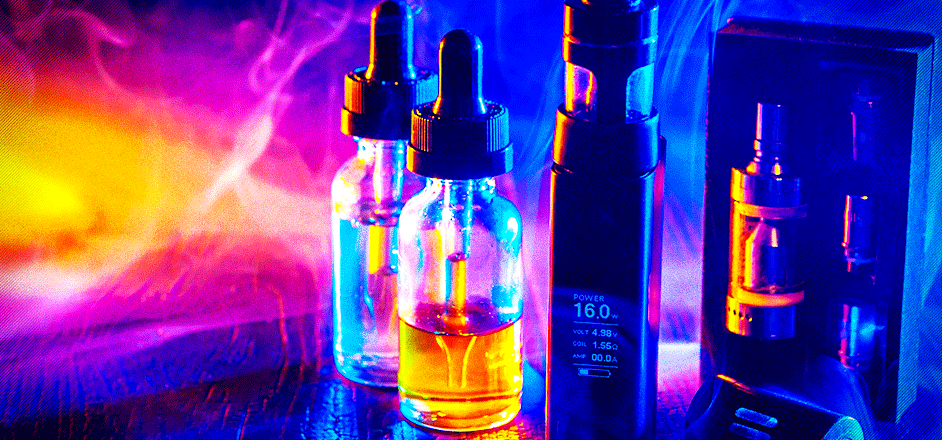If you were to believe some media outlets out there right now, you might think that teenagers were dropping dead on every street corner, rasping, coughing, gasping for air as their lungs collapsed inside their chests. You might believe that the “vaping epidemic” is emptying out schools as kids are rushed off to hospitals.
And in some states, that might actually be the case. But, curiously, not here in Colorado — despite this state having the highest rate of teen-vape-usage.
California has had over 100 reported cases of Vape-Associated Pulmonary Injuries (VAPI’s); Minnesota, Wisconsin, Illinois, Indiana and Texas have all reported over 50 of them. Cases have been reported in 48 US states (and one territory) and 18 deaths have been confirmed nation-wide. All told, there’s been 1,080 reported cases of vape-related illnesses in the US as of October 1st.
The CDC says it has no idea what’s causing this outbreak of VAPI’s. But they are advising people to stay away from vapes entirely — cannabis or nicotine, black market or store bought — if you care for your health just don’t use them, they say.
“We're still in an active investigation here and trying to zero in on the culprit. We don't have the smoking gun yet,” says Dr. Daniel Shodell with the Colorado Department of Public Health (CDPHE). “Right now, we are advising folks that the safest course of action is to consider not vaping.”
But here’s a conundrum for you: Colorado, which has the highest rate of teen vape usage in the country, has had fewer cases of vape related illnesses than almost anywhere else. While other states are struggling with hundreds of cases of VAPI’s, Colorado has seen only 9 (just 7 of which have resulted in hospitalizations and none of which were fatal).

Strange isn’t it? That in a state where so many people are using both nicotine and cannabis vapes, thousands of feet above sea level, there would be so few of these outbreak cases? One might think that Colorado, of all places, would be right up there at the top of the list with California and Wisconsin.
But we aren’t. And that has left the CDPHE scratching their heads.
“Right now, we don't know what the specific cause of this severe illness is,” says Shodell. “What we do know is that the common denominator is vaping.”
Some suggest it could be oils in the vape e-liquid (be it cannabis or nicotine), that don’t react well with the insides of a person’s lungs.
“Our lungs and oil are simply not compatible and when people do aspirate or breathe in oily materials it can cause direct damage to the lung tissue,” says Shodell. It's referred to as pneumonitis and its essentially inflammation of the lungs, he says. But they can’t definitively say that’s exactly what’s causing all of these VAPI cases.
It’s also been suggested that all of this is related to cheaply made or black market vape cartridges, and/or tampered-with devices. Cartridges made with knock-off, non-approved chemicals and materials are not uncommon — particularly among states where cannabis is still fully illegal. When people can’t buy their cannabis concentrate carts at a store, where else are they going to go except the black market? And when they buy from an unregulated source, they’re rolling the dice with unregulated materials.
There’s no knowing, though. Because, as Shodell explained, of the cases reported in Colorado there’s no clear correlation between regulated/unregulated products and VAPI’s.
“The cases that are reported, that we've investigated, we do see a mix of people using those unregulated and exclusively regulated products as well,” he says. “So that does not seem like a likely explanation for this particular observation.”
Still, on the CDPHE’s web page on “Vaping and lung disease,” under the “What to avoid section” they make two very specific suggestions: 1) Do not buy vaping products off the street (for example, vaping products with THC or other cannabinoids). And 2) Do not modify vaping products or add any substances to these products that are not intended by the manufacturer.
There are no answers yet, only suggestions like these. Only theories. As Dr. Shodell at the CDPHE made painfully clear, nobody has any definitive proof of anything, no one knows why vapes are just now starting to cause this problem.
In fact, Shodell points out that these illnesses actually might not be anything new at all. This may have been going on in Colorado and throughout the rest of the country for a long time and the cases are only now being recognized as VAPI’s. Maybe Colorado has had far more of these cases than we’ve realized, simply because they went unreported or were diagnosed as something else.
The mystery persists. But we’re getting closer to an answer every day. Until we know for sure what the real cause of all this is, though, the CDPHE, the CDC and your mom will all continue to say the same thing: don’t vape.
But the fact remains (unexplained or not) that if you live in Colorado and you do vape, your chances of being hospitalized with a VAPI are significantly lower than if you’re in California, Minnesota or Wisconsin. There’s just no knowing why.
Not yet, at least.



Leave a Reply